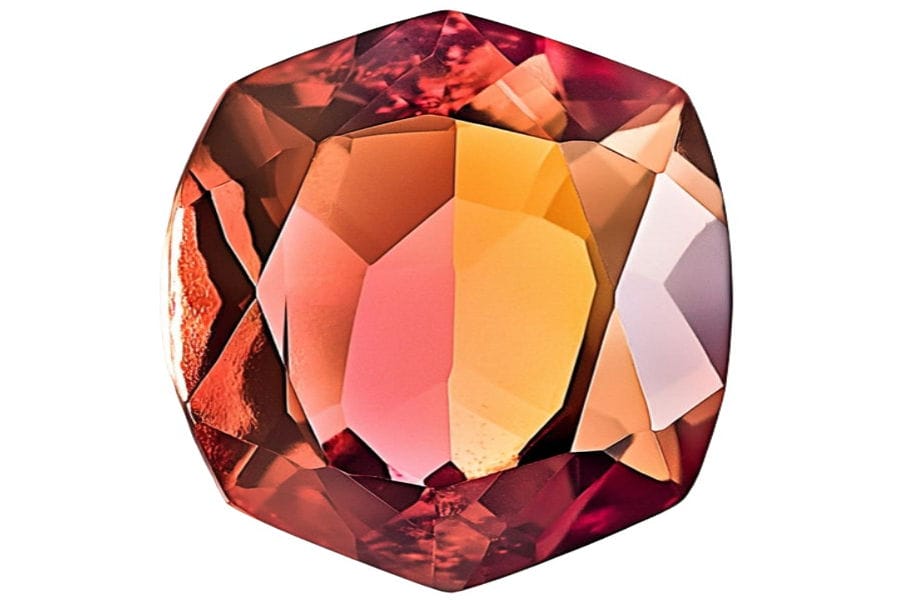
Arizona is known for its beautiful desert landscapes and rich gemstone deposits, making it a great place to find topaz. Whether a seasoned rock hunter or a beginner, Arizona offers plenty of spots to search for this sparkling gem.
Popular locations like the Four Peaks Amethyst Mine and San Carlos Apache Reservation are great places to start. Lesser-known areas such as Mogollon Rim and Burro Creek also offer opportunities to uncover topaz treasures.
How Topaz Forms Here
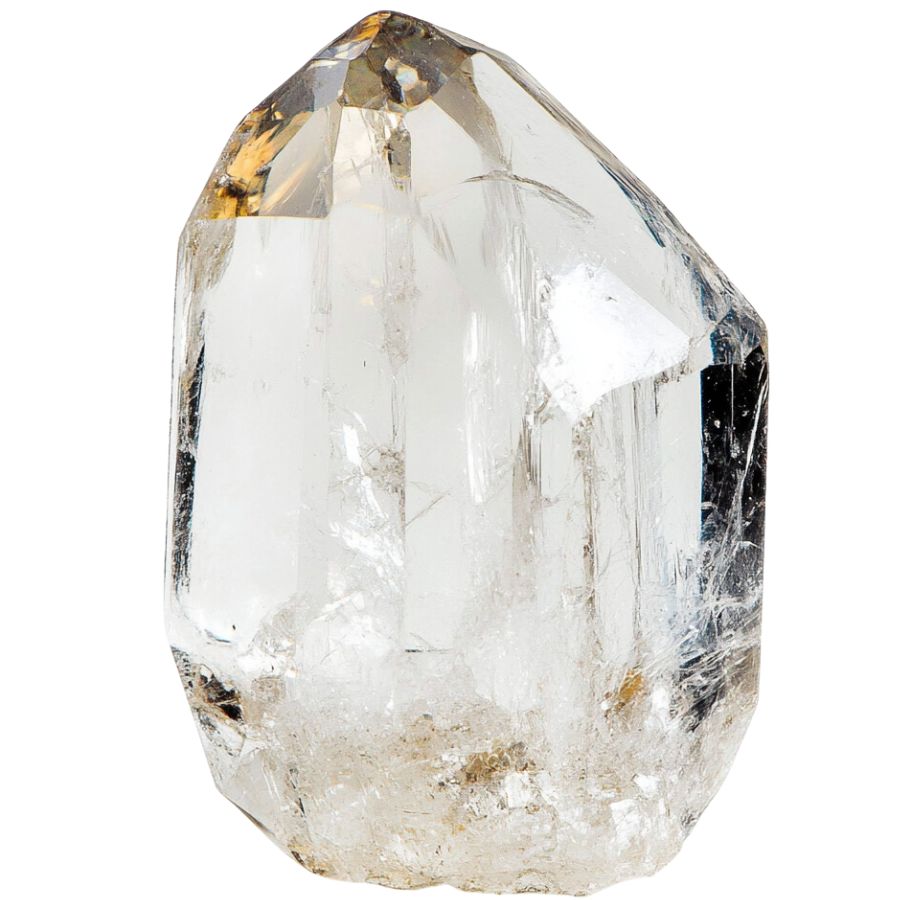
Topaz forms inside hollow spaces in igneous rocks under specific conditions. It grows when high pressure combines with fluorine-rich vapors.
These spaces form as magma cools, leaving room for minerals to crystallize. Over time, the right elements settle, allowing topaz to grow in these gaps.
Topaz often grows alongside quartz and other silicate minerals. This close growth can result in interesting combinations of minerals in one rock.
Topaz is found in areas shaped by volcanic activity and the movement of magma beneath the Earth’s surface. This includes regions where ancient volcanoes once erupted or where magma cooled slowly underground, forming cavities where topaz could grow.
Types of Topaz
Topaz can look different depending on what it’s made of and how it forms. These differences are due to changes in the elements present in the topaz crystals and their environment during their growth.
Imperial Topaz
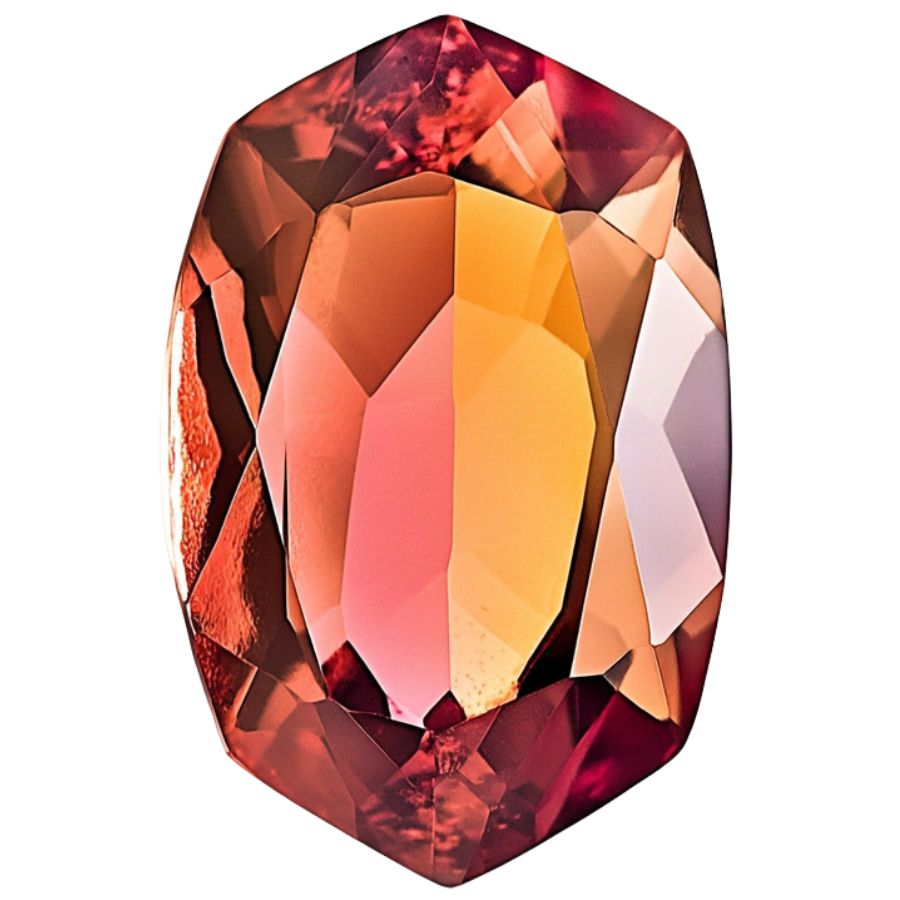
Imperial topaz is prized for its rich colors, including yellow, pink, and pink-orange. Pink stones are particularly rare. Brazilian imperal topaz often features shades ranging from bright yellow to deep golden brown, with some showing hints of violet.
Some light or brown topaz stones are treated to bring out brighter colors like gold, pink, or violet. However, these enhanced stones may lose their color if exposed to sunlight for too long.
The name “Imperial Topaz” comes from its historical connection to Russian royalty. During the 18th and 19th centuries, this gemstone was reserved for royal use and often featured in their jewelry.
Mystic Topaz

Mystic topaz is a natural gemstone enhanced by a special coating applied to colorless topaz. This thin coating creates a rainbow-like effect on the surface, giving the stone a vibrant, colorful look.
The coating used on mystic topaz is similar to the coating applied to camera lenses. It creates an iridescent effect that shows a mix of bright colors across the stone’s surface.
Although mystic topaz is made from real topaz, its treated surface often causes confusion. The bold colors and shiny appearance come from the added coating, not from the stone itself.
London Blue Topaz
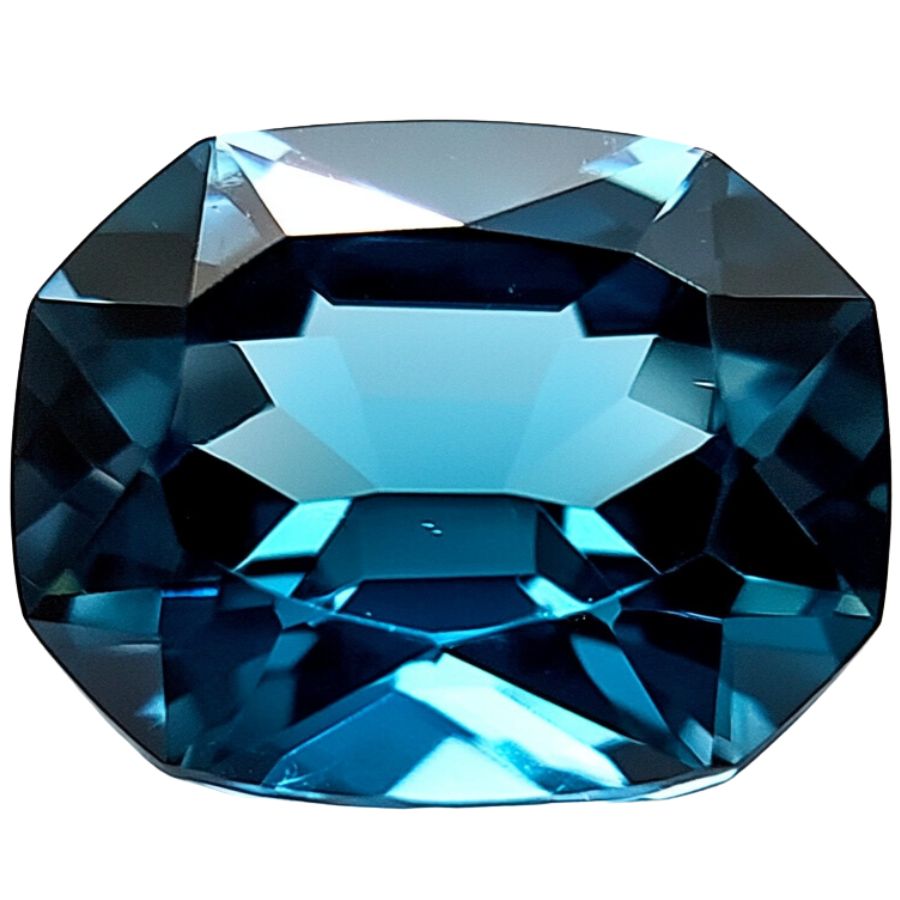
Despite its name, London Blue topaz has no ties to England! The name is simply a marketing term used to describe this popular gemstone.
London Blue topaz is prized for its deep, stormy blue color. This variety is one of the most in-demand types of blue topaz because of its rich and distinctive hue.
The striking blue shades of London Blue topaz are produced through heat treatment, which enhances its natural trace elements. Although topaz is found in many places, most gem-quality stones used for London Blue topaz come from Brazil.
Swiss Blue Topaz
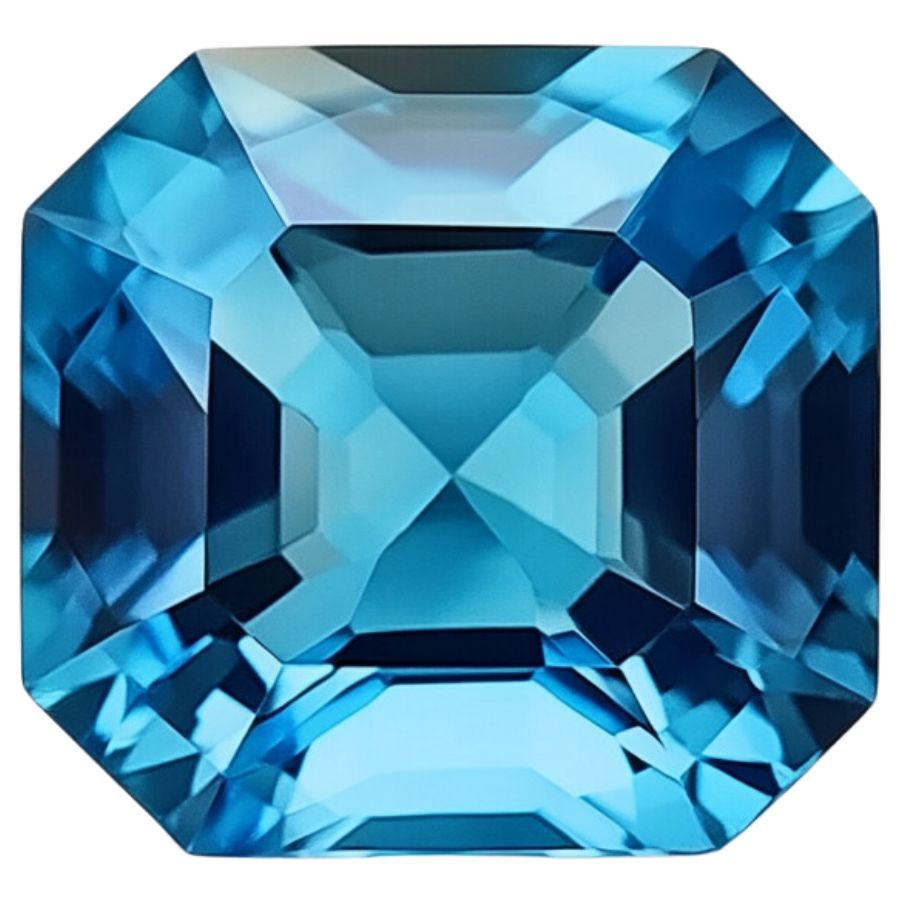
Swiss Blue topaz is known for its bright and vivid blue color, with a light tone and medium saturation.
Because natural blue topaz is quite rare, most Swiss Blue topaz is created by treating clear or pale-colored topaz with radiation and heat. That’s how it gets its vivid color!
Its bright blue shade is also much lighter and happier compared to the darker tones of London Blue topaz.
Blue Topaz
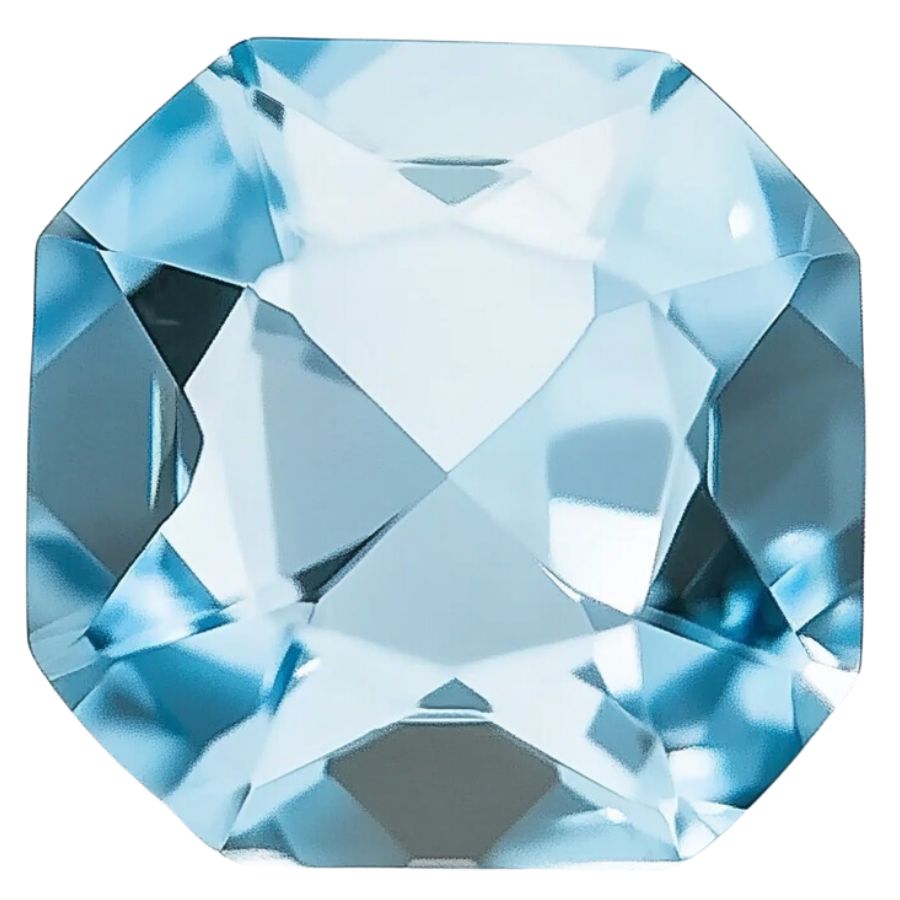
Natural blue topaz is very rare and usually comes in soft, pale blue shades. Because it is so uncommon, most blue topaz available today has been artificially treated to achieve its color.
To make blue topaz, clear or colorless stones are exposed to high-energy radiation and then heated. This method, developed in the 1970s, allows blue topaz to be produced in different shades.
The radiation changes the structure of the crystal, affecting how it reflects and absorbs light. This creates the blue color, making treated blue topaz look very similar to natural blue topaz.
Colorless/White Topaz
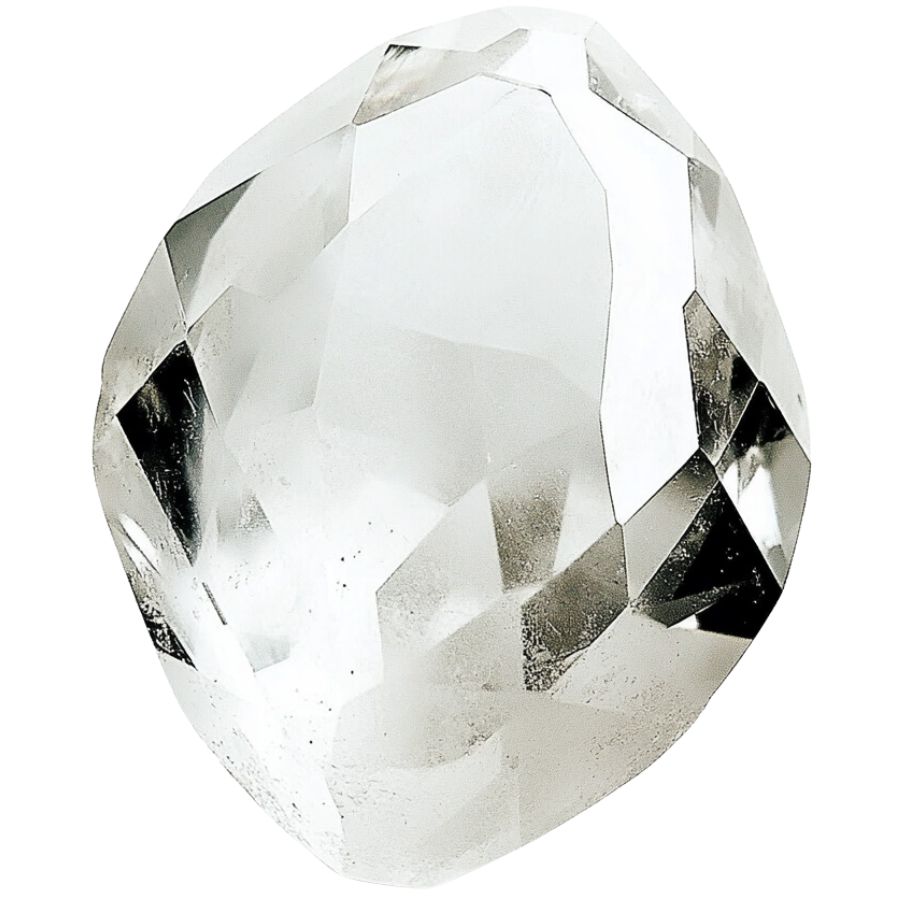
Colorless topaz is the most common type found in nature, but small amounts of other elements can give it light blue or golden brown shades. This type of topaz is often treated with heat and radiation to turn it into other colors.
Topaz doesn’t sparkle as much as some other gemstones because of how it bends light. Still, high-quality colorless topaz can shine more than quartz of the same cut and can be polished to a smooth, shiny finish.
When cut in a “brilliant” style, colorless topaz sparkles in different ways depending on the angles. It might have a bright center with duller sides or sparkling sides with a less shiny middle.
Pink Topaz
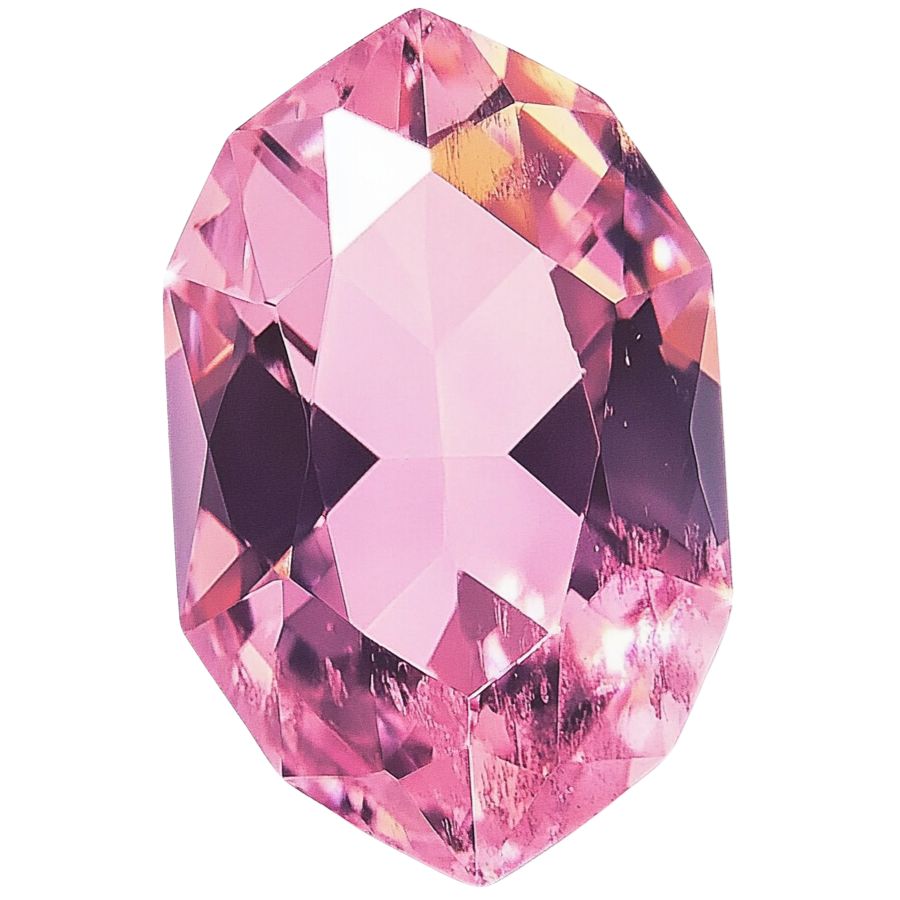
Pink topaz is a rare type of topaz that gets its color from chromium replacing aluminum in the crystal. This natural process makes pink and red topaz quite rare.
Some pink topaz is made through artificial treatments that change the stone’s color. These treatments help create more pink topaz and make it easier to find in stores.
Pink topaz can be pale or bright, depending on how much it is treated or what natural impurities it contains.
Green Topaz
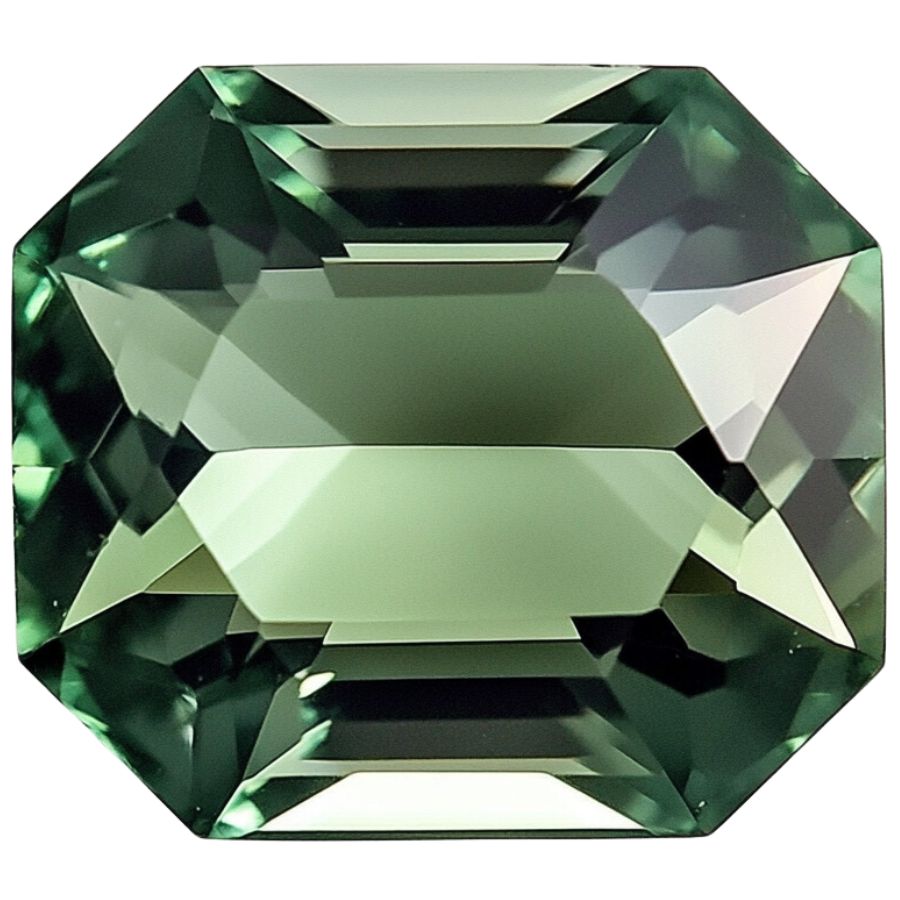
Green topaz forms naturally but is very rare and costly. Most green topaz sold today is created by treating or coating colorless topaz.
A process called diffusion treatment, which uses chemicals on white topaz, is often used to produce green topaz. Darker green shades usually come from irradiation, similar to how darker blue topaz is made.
Light green topaz, with a color similar to sea green aquamarine, can form naturally but is hard to find. These pale tones differ from the brighter greens created through treatments.
Bicolor Topaz
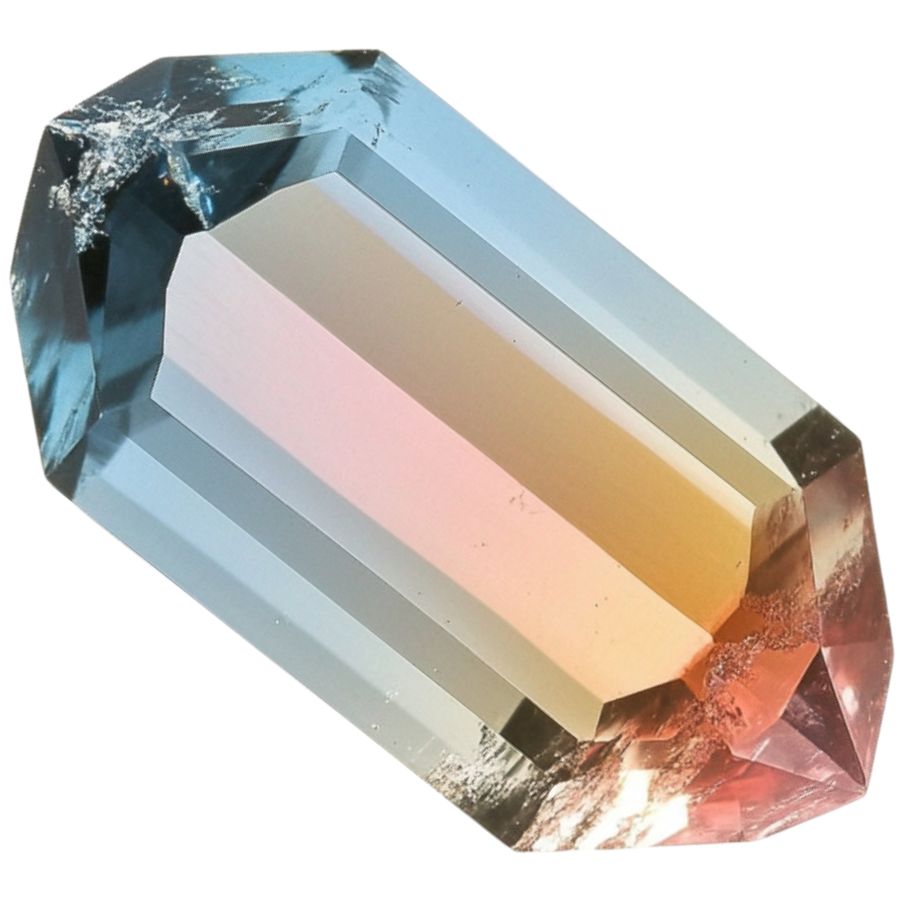
Bicolor topaz, also known as polychrome topaz, is a rare natural gemstone found only in the Volyn deposit in Ukraine. These gems display multiple colors in one crystal, often combining shades of blue and gold.
The Volyn deposit is known for its large, high-quality topaz crystals, including these bicolor stones!
What Rough Topaz Looks Like
To find rough topaz in nature, you’ll need to know what it looks like and what its key features are. Knowing these can help you spot the gemstone more quickly and easily.
When you’re out looking for rough Topaz on your own it’s important to know what you’re looking for. But before we dive into specifically what to look for you need to make sure you understand the type of rocks and minerals you’re seeing.
So many rockhounds find some pretty incredible rocks and minerals and toss them away because they don’t know what they have.
If you want REAL results finding incredible rocks and minerals you need one of these 👇👇👇
Finding the coolest rocks in isn’t luck, it's knowing what to look for. Thousands of your fellow rock hunters are already carrying Rock Chasing field guides. Maybe it's time you joined the community.
Lightweight, mud-proof, and packed with clear photos, it’s become the go-to tool for anyone interested discovering what’s hidden under our red dirt and what they've already found.
Join them, and make your next rockhounding trip actually pay off.
What makes it different:
- 📍 Find and identify 140 incredible crystals, rocks, gemstones, minerals, and geodes across the USA
- 🚙 Field-tested across America's rivers, ranchlands, mountains, and roadcuts
- 📘 Heavy duty laminated pages resist dust, sweat, and water
- 🧠 Zero fluff — just clear visuals and straight-to-the-point info
- ⭐ Rated 4.8★ by real collectors who actually use it in the field
Crystal Shape
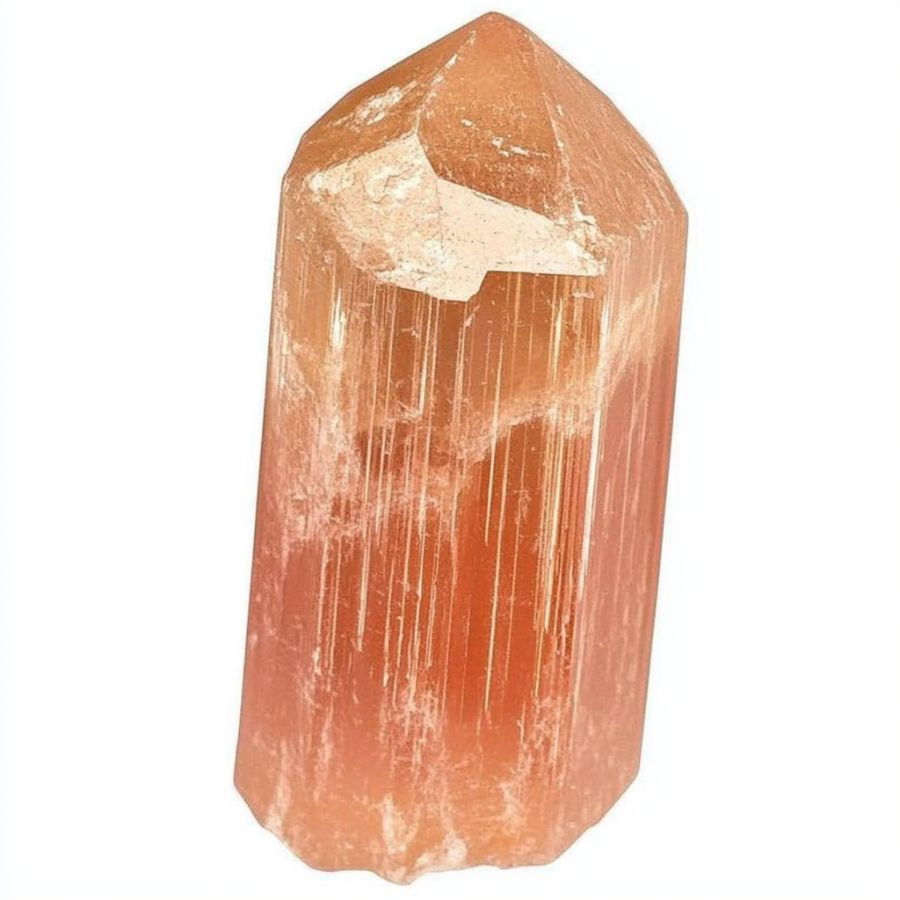
Raw topaz crystals can have different shapes, from long and thin to short and thick. Their ends also vary, often showing blunt, pyramid-like, chisel, or wedge shapes.
Topaz can sometimes appear as chunky pieces, grainy fragments, or smooth, rounded pebbles. It may also form in column-like shapes or mimic the look of feldspar through a process called pseudomorphing.
Hardness
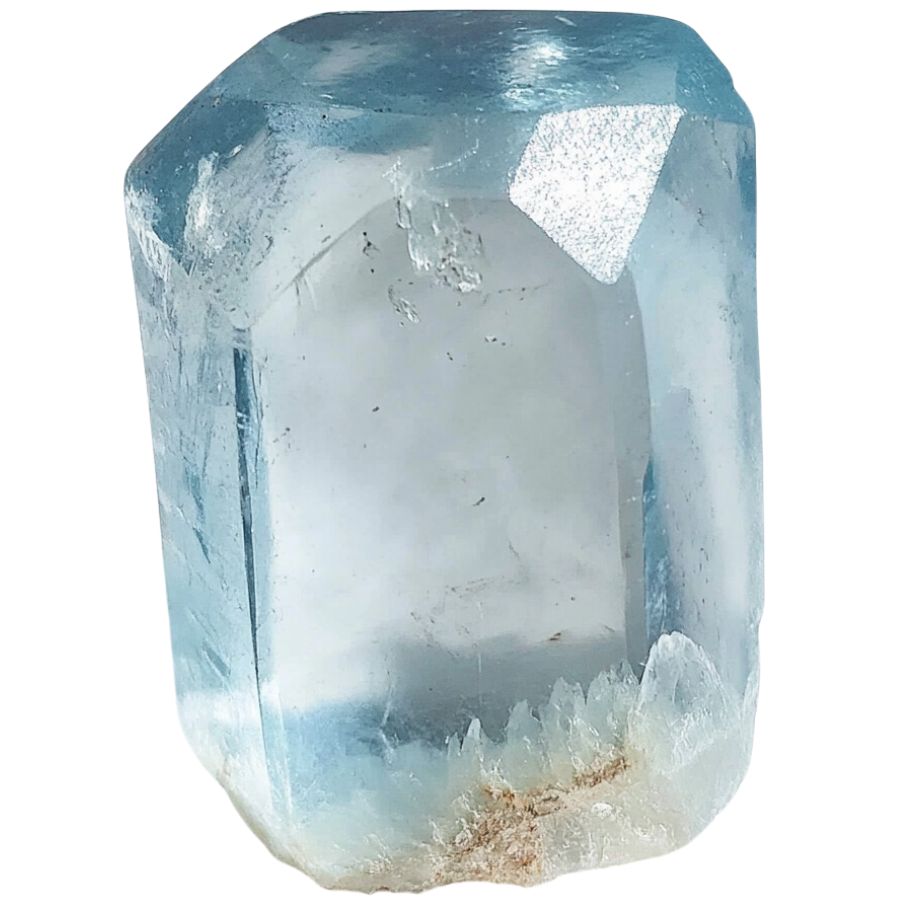
Raw topaz has a hardness of 8 on the Mohs scale, making it tougher than quartz and able to scratch glass. To identify raw topaz, you can test its ability to scratch materials like glass.
However, it can still chip along its natural cleavage planes. It’s still durable but will need to be handled carefully.
Cleavage
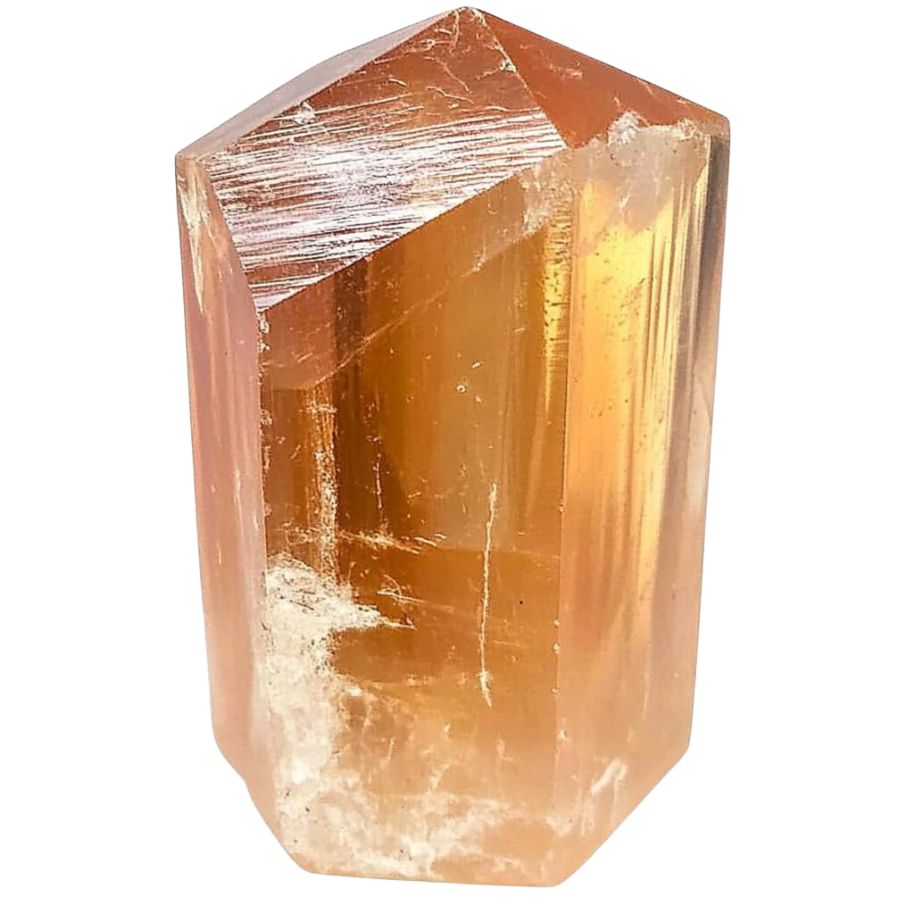
Topaz is known for its perfect basal cleavage, which lets it break cleanly along a single flat surface. These smooth, flat surfaces are a defining feature of raw topaz.
This feature is especially clear in rough or broken pieces. It helps set topaz apart from other minerals that may look similar.
Transparency and Glass-Like Luster
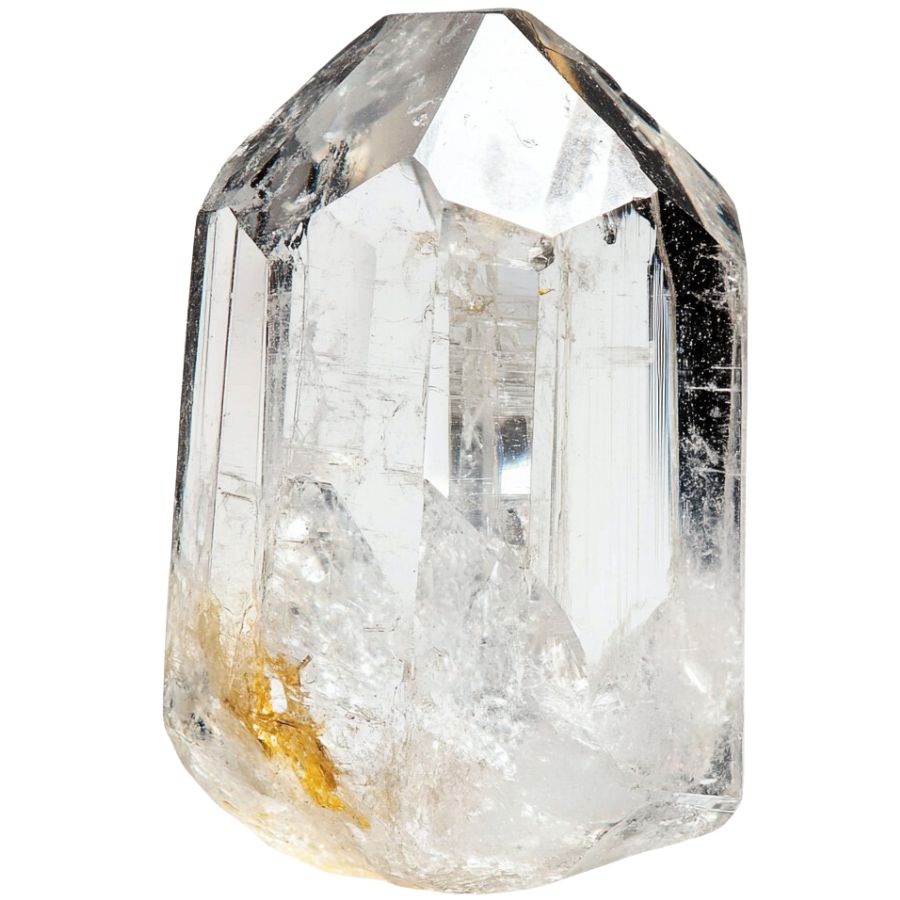
Raw topaz is recognized for its glassy, or vitreous, shine, which is most noticeable on freshly broken surfaces. This shiny luster helps set it apart from minerals with dull or resin-like finishes.
Generally, raw topaz can be clear or translucent, adding to its reflective appearance. These qualities together make it easier to identify raw topaz in its natural form.
Color
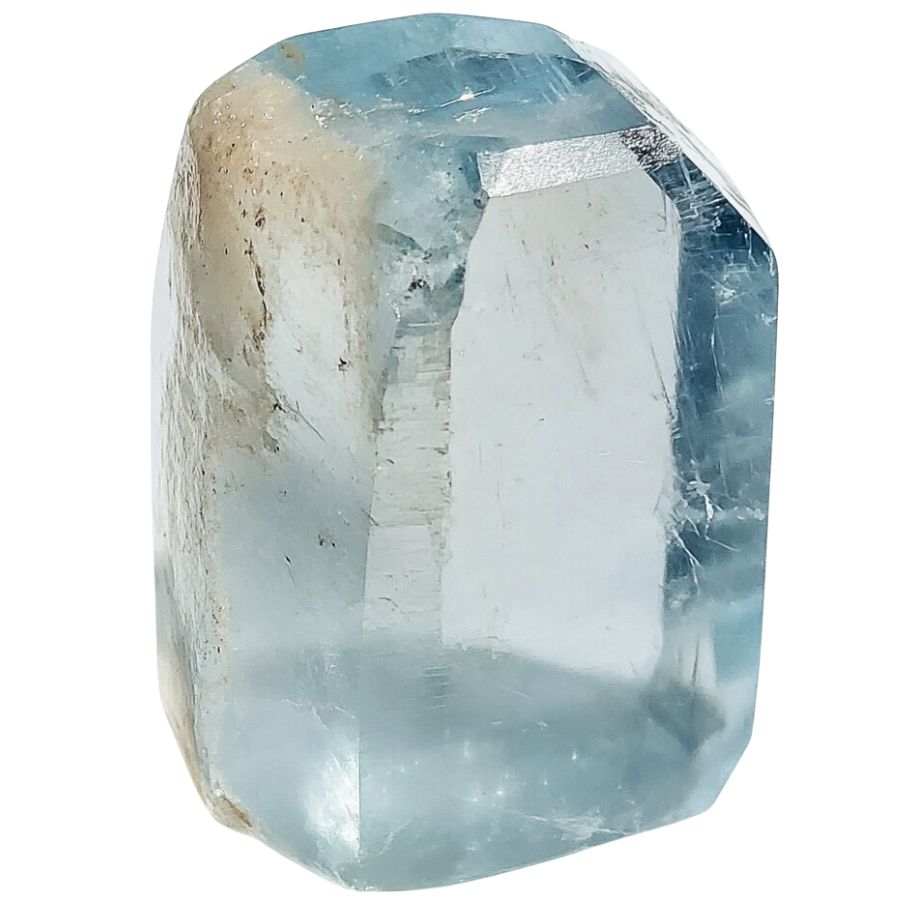
Raw topaz comes in many colors, including colorless, yellow, brown, blue, orange, and gray. These natural hues are caused by impurities in the crystal structure, giving the stone its variety of shades.
Less common colors include reddish-pink, pink, and green. These rare tones are especially noticeable in unpolished stones.
Tips on Where to look
Finding topaz in nature starts with knowing the right places to look. Certain areas within these state are more likely to have this gemstone in its raw form.
Granite Pegmatites
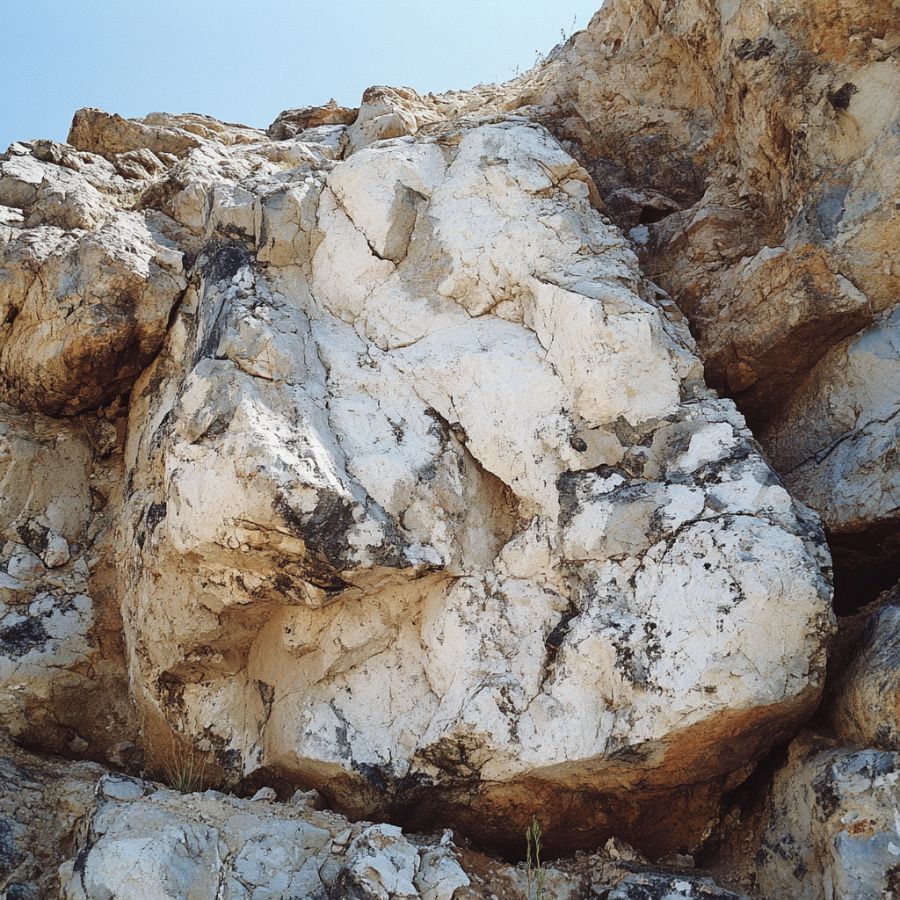
Search for topaz in areas with granitic pegmatites, where large crystals of feldspar, quartz, and mica are common. These places have the right conditions for topaz to form.
Rhyolites
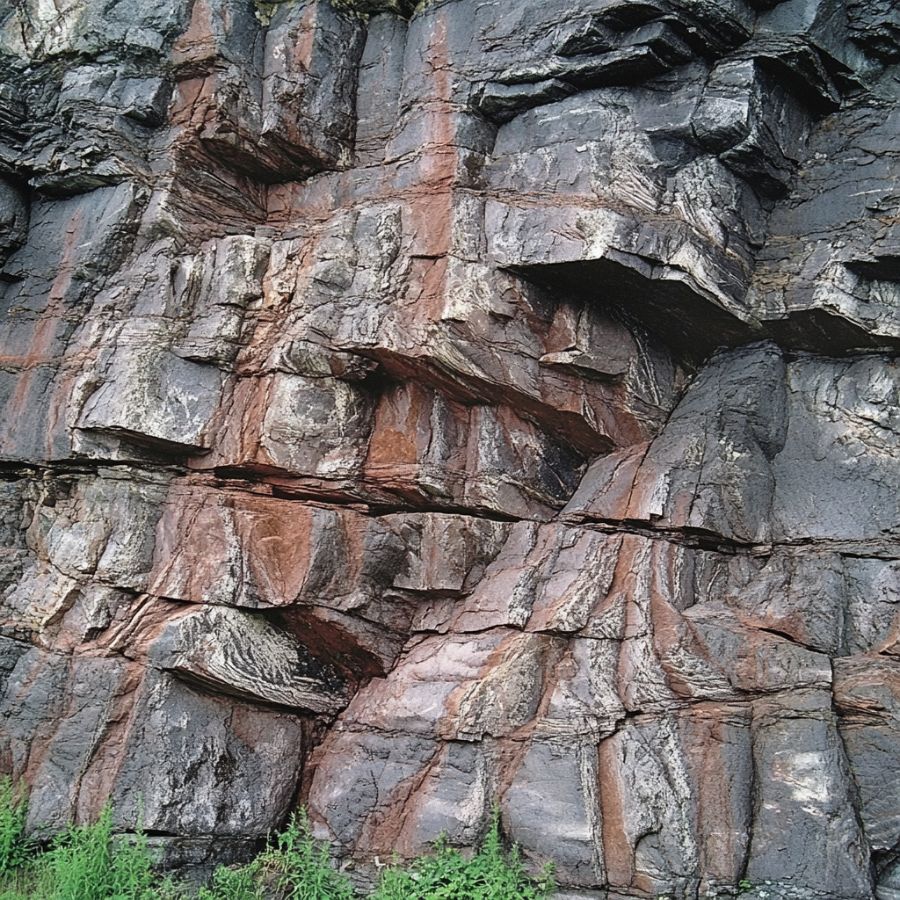
Look for topaz in volcanic areas with rhyolite, where it can form in cavities within the rock. Focus on spots with visible pockets or cavities that might hold crystals.
Stream Beds and Gravel Deposits
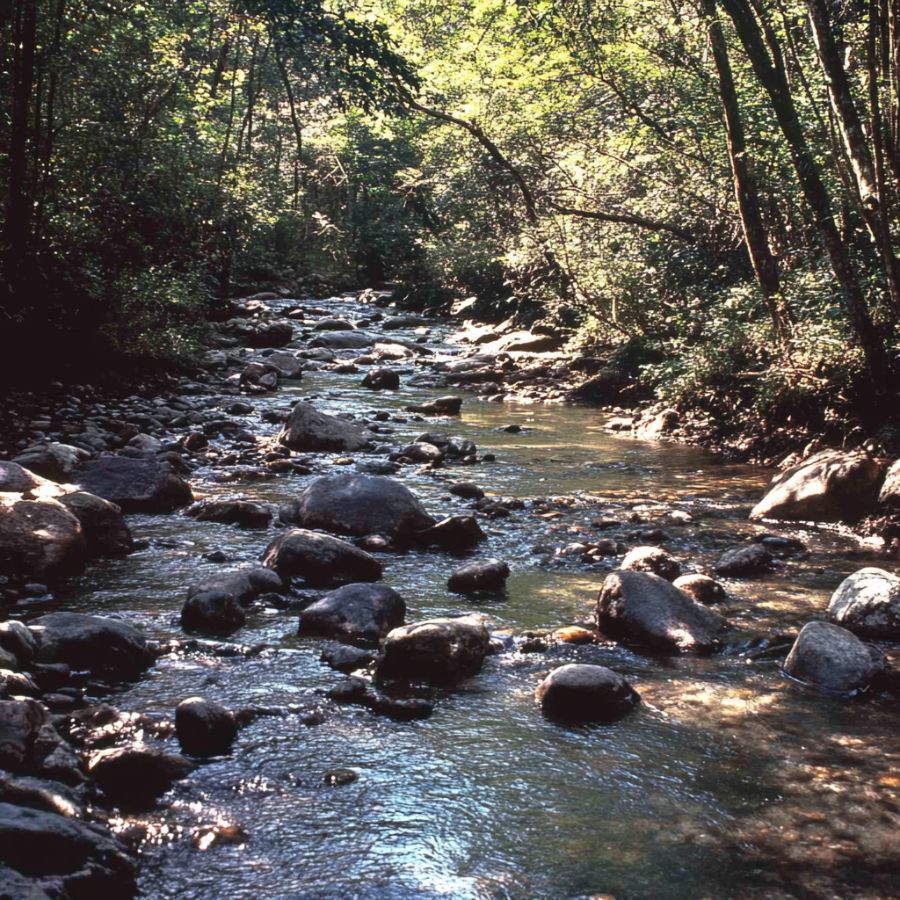
Explore stream beds and gravel deposits near areas known for topaz. Flowing water can break down rocks, carrying topaz crystals downstream and depositing them in sediments.
Hydrothermal Veins
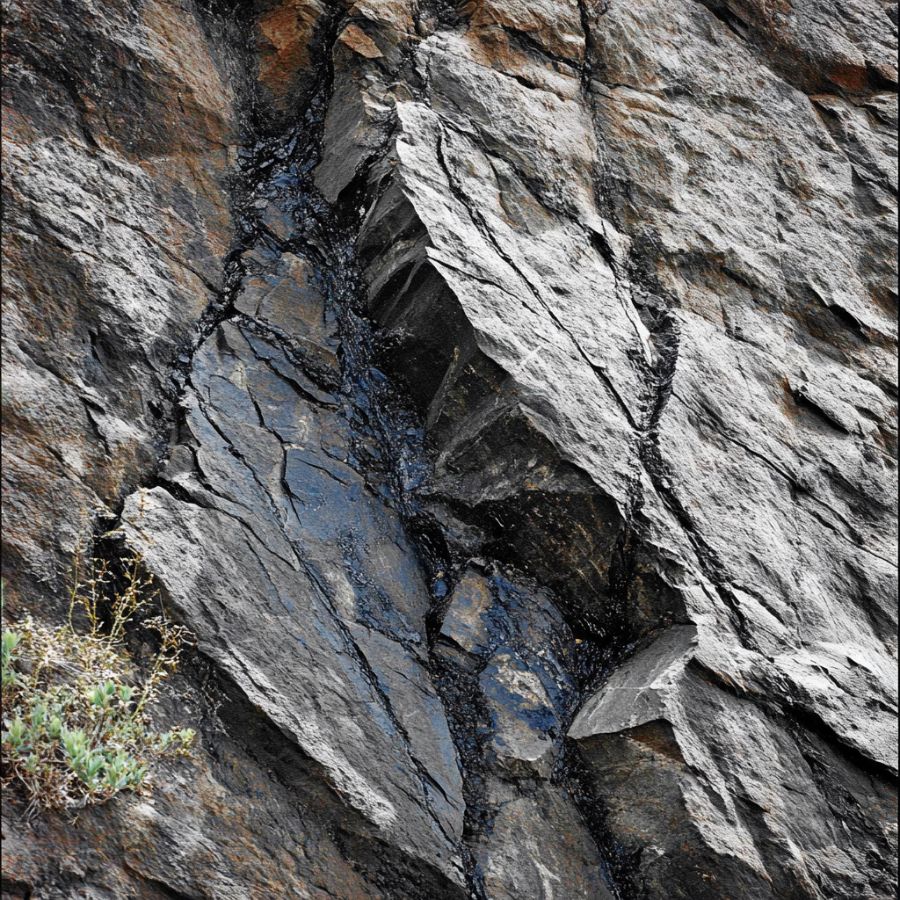
Look in areas with hydrothermal activity, where topaz can form in quartz-rich veins. These veins develop from hot, mineral-filled fluids.
The types of Topaz you can find around the state
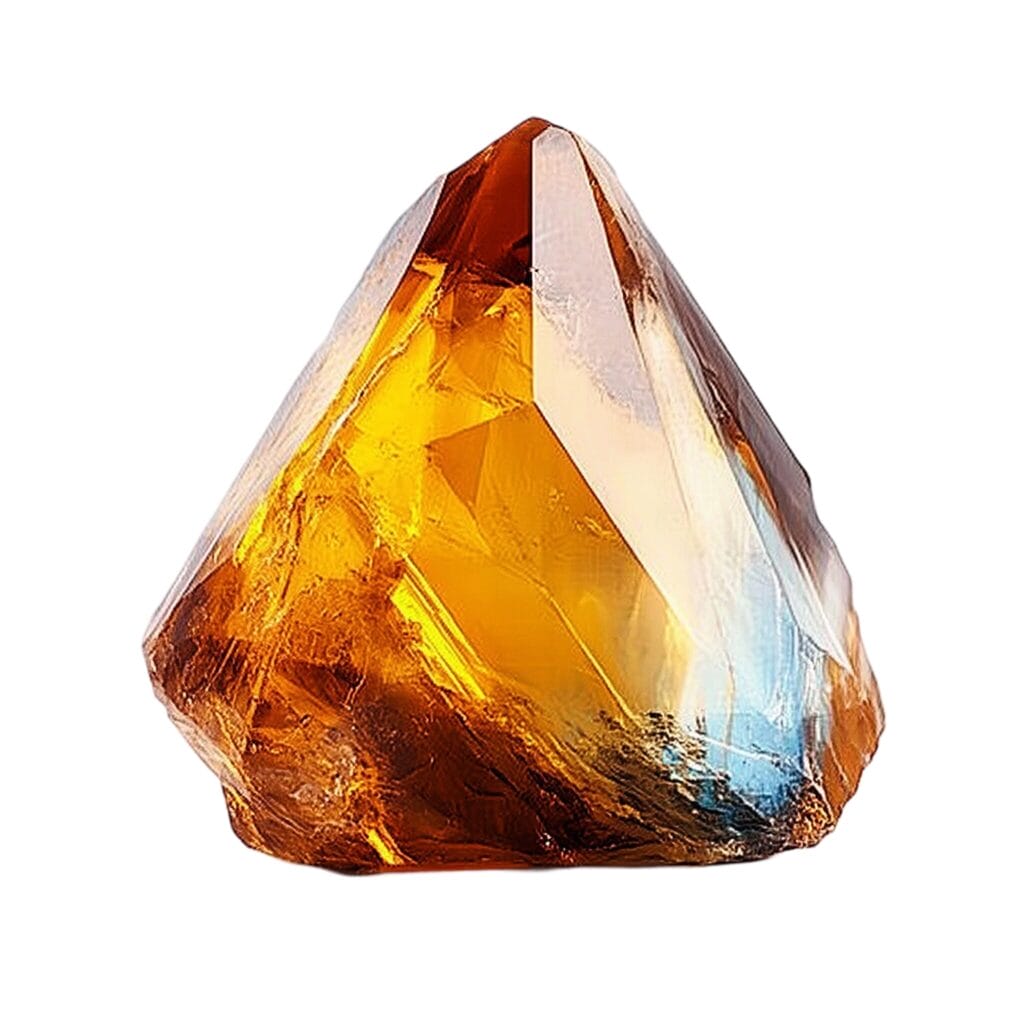
Arizona may not be as famous as Brazil for topaz, but the state is home to some unique varieties. The most common topaz found here is colorless or white, often used as a base for color treatments, and it sparkles beautifully in the light.
Natural blue topaz can also be found, though it’s usually a soft, pale blue. On rare occasions, collectors might discover light golden brown or yellow topaz, adding to the variety of colors that Arizona offers.
Some Great Places To Start
These are some of the places where you can find topaz around the state.
Always Confirm Access and Collection Rules!
Before heading out to any of the locations on our list you need to confirm access requirements and collection rules for both public and private locations directly with the location. We haven’t personally verified every location and the access requirements and collection rules often change without notice.
Many of the locations we mention will not allow collecting but are still great places for those who love to find beautiful rocks and minerals in the wild without keeping them. We also can’t guarantee you will find anything in these locations since they are constantly changing.
Always get updated information directly from the source ahead of time to ensure responsible rockhounding. If you want even more current options it’s always a good idea to contact local rock and mineral clubs and groups
William DeBorde property
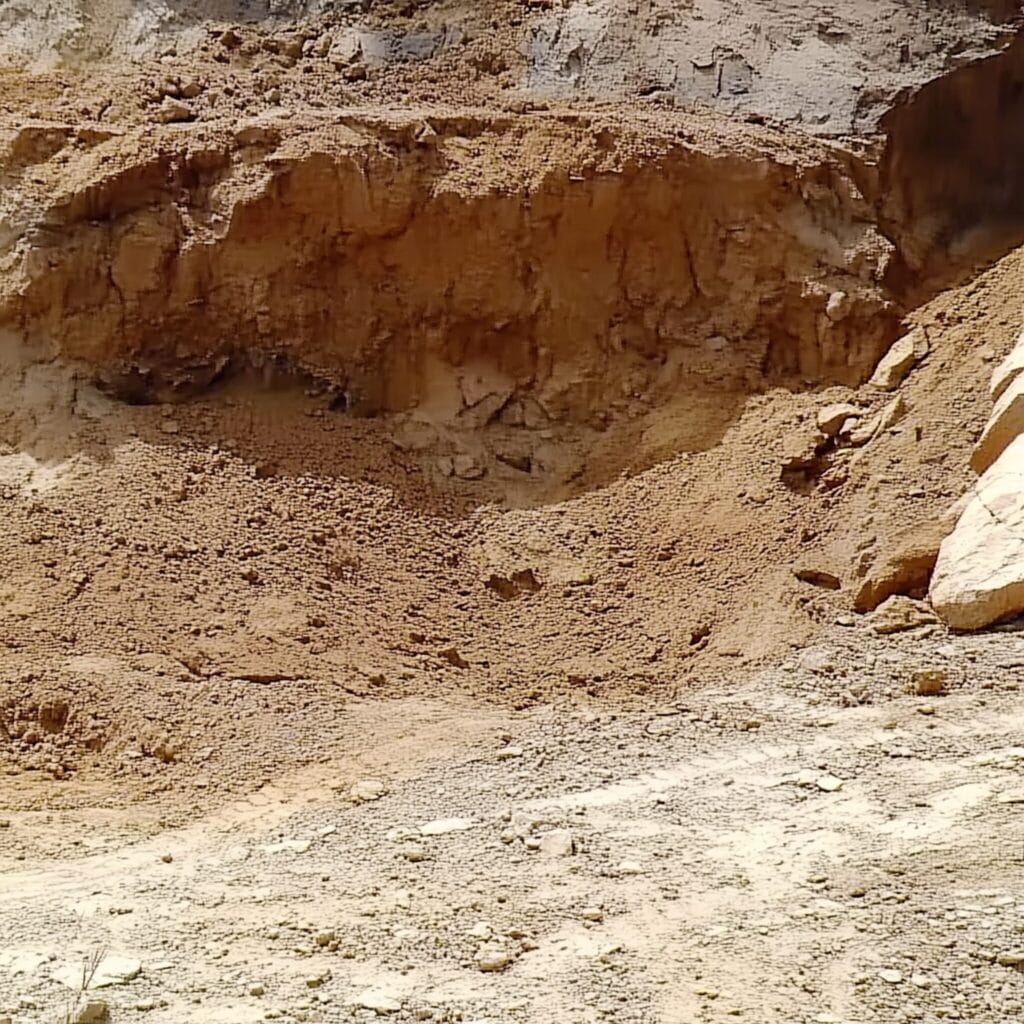
The William DeBorde property near Dewey-Humboldt is a great spot for finding topaz. Known for clear and pale blue topaz, it’s a private area that requires permission, making it peaceful for collectors.
To find topaz, look for areas where erosion has exposed mineral-rich veins. After rain, the ground is easier to search, and tools like a rock hammer and sifting screens help separate topaz from other materials.
NW slope Fremont Peak occurrences
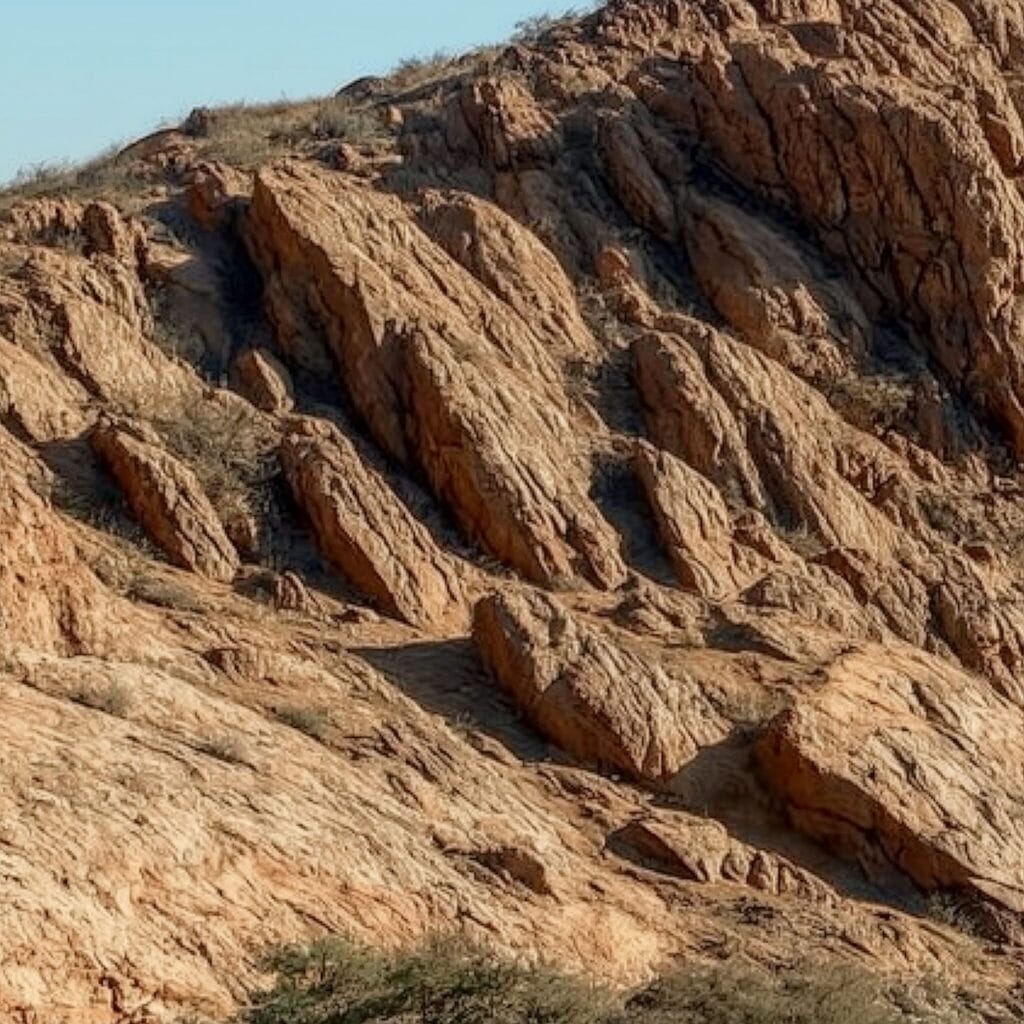
The northwest slope of Fremont Peak in the Dragoon Mountains is a great spot to search for topaz. Known for its mineral deposits, you can find topaz alongside quartz and feldspar in its natural clear or pale color.
Look for topaz in gravelly slopes or exposed rock areas where fragments are likely to show. Digging and sifting near dry creek beds or erosion channels can reveal hidden gems, but be sure to wear sturdy shoes and bring water for safety.
Breadpan claim

The Breadpan Claim near the Pinaleno Mountains in southeastern Arizona is a great spot for topaz. Known for gemstone discoveries, the area has clear topaz and stones with golden or light blue hues.
Look for topaz in rocky outcrops and weathered volcanic deposits, where it’s often found. Using hand tools like a rock pick and brush can help uncover topaz, and checking old dig sites might reveal missed gems.
Dysart claim
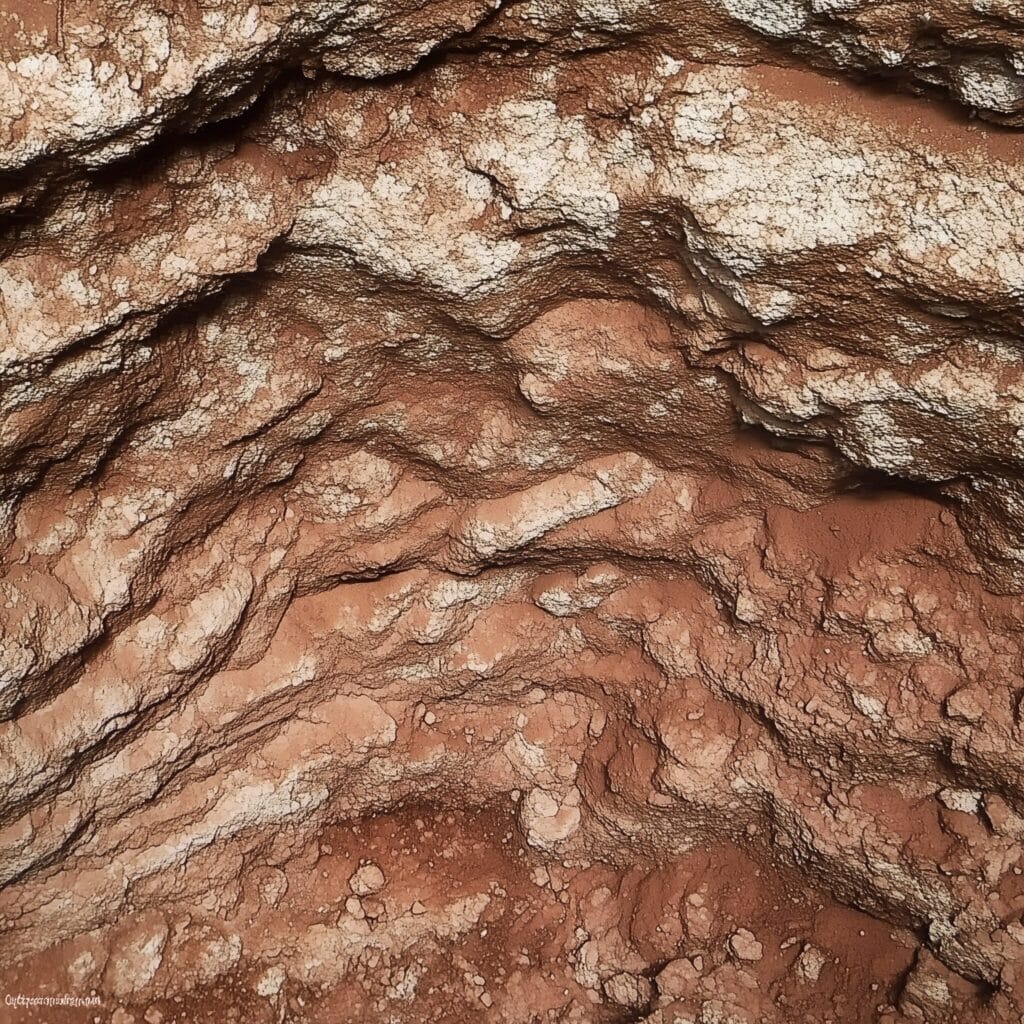
The Dysart Claim near Wickenburg, Arizona, is a great spot for finding topaz. Known for colorless and light blue topaz, it’s found in pegmatite veins mixed with quartz and feldspar.
To find topaz, focus on exposed pegmatite formations and freshly disturbed soil. Using a chisel and brush to carefully uncover stones can help, especially around slopes where erosion has loosened gems.
Spring Creek area
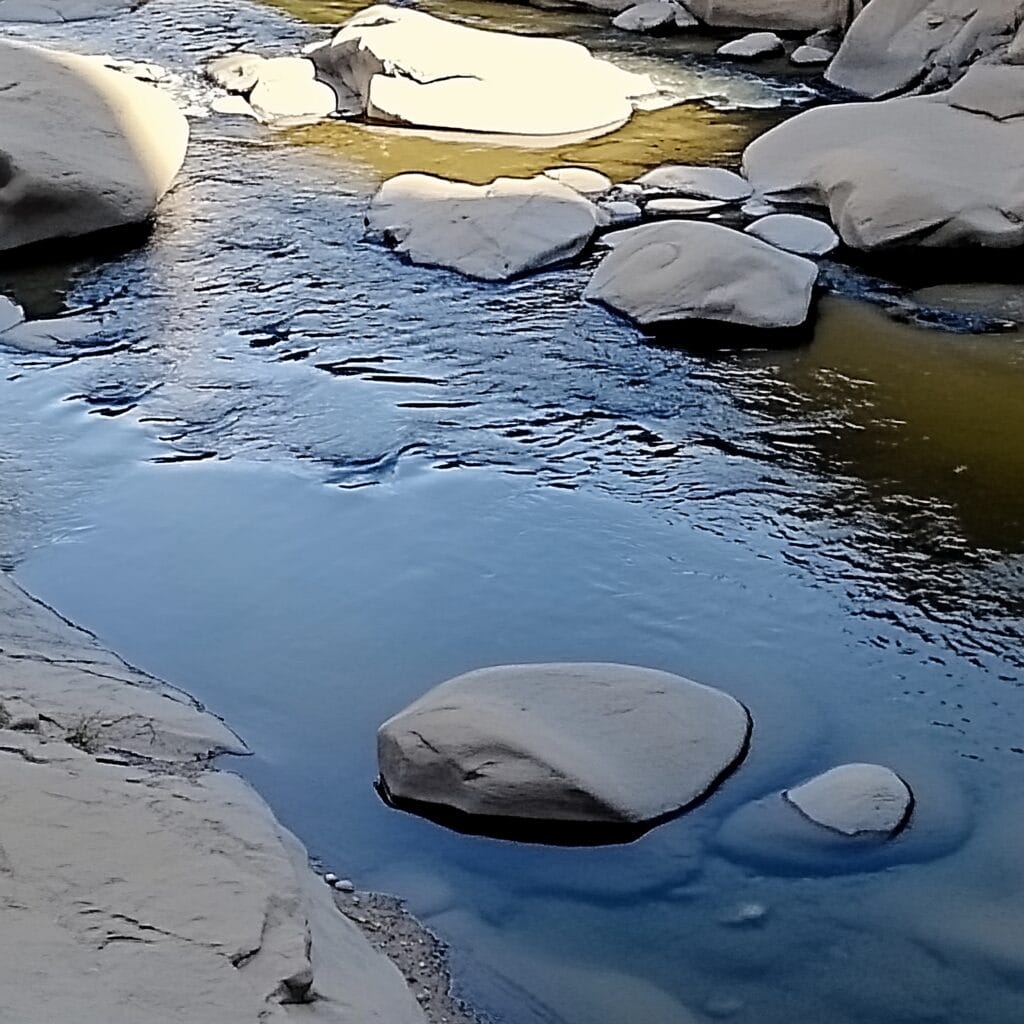
The Spring Creek area near the Tonto National Forest is perfect for finding topaz in its natural setting. With easy-to-reach creek beds and rocky ground, it’s a popular spot for all rockhounds.
To find topaz, focus on gravel banks and shallow parts of the creek, especially after rain. Sifting through the sediments with a screen or checking larger rocks can help uncover hidden gems.
Places Topaz has been found by county
Other places in the state are good for looking for topaz. These areas have different types of landscapes but still offer the chance to find some great gems.
| County | Location |
| La Paz | West slope |
| Mohave | Negro Ed Mesa |
| Mohave | Rare Metals Mine area |
| Mohave | Unnamed Beryl mines |
| Mohave | Lion Spring occurrence |
| Mohave | Unnamed unspecified prospect |
| Pima | Ajo Mining District |
| Pima | Gibson Arroyo area |
| Pima | Twin Buttes Mine |
| Pima | Rincon Mountains |
| Pima | Tanque Verde Ridge |
| Pinal | Ash Creek rhyolite |
| Pinal | Ash Creek, Saddle Mountain area |
| Pinal | Resolution deposit, Superior |
| Pinal | Superior, near the Pinal Mountains |
| Pinal | Peralta Creek |
| Pinal | Arizona Stone Quarry |
| Maricopa | Gila Bend, Little Hell’s Canyon |
| Maricopa | Apache Leap, near Superior |
| Mohave | Black Mountain, near Littlefield |
| Mohave | Chloride, Arizona |
| Coconino | Black Rock Mountain, near Flagstaff |
| Coconino | San Francisco Mountains, near Flagstaff |
| Coconino | Red Mountain, near Verde Valley |
| Cochise | Gleeson Mine, near Gleeson |
| Cochise | Dragoon Mountains, near Tombstone |
| Graham | Bonita Creek, near Safford |
| Graham | Copper Mountain, near Pima |
| Greenlee | Greenlee County, near Clifton |
| Greenlee | Hilltop Mine, near Clifton |


